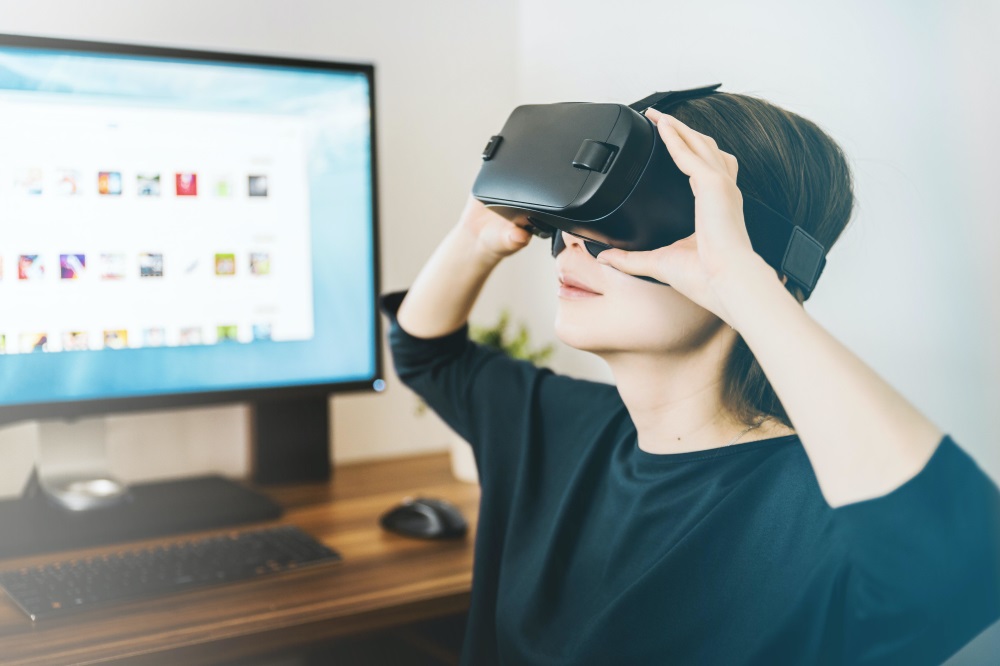
The impact of virtual reality (vr) on the future of online shopping
Introduction
Online shopping has come a long way since its inception, but the future promises even more exciting advancements. One such innovation with the potential to revolutionize the e-commerce landscape is virtual reality (vr). In this article, we will explore the impact of vr on the future of online shopping and how it can create immersive shopping experiences like never before.
1. Immersive virtual showrooms
Imagine being able to walk through a virtual store, examining products just as you would in a physical store. Vr can create immersive virtual showrooms where customers can explore products in a three-dimensional space. This not only enhances the shopping experience but also helps customers make more informed purchasing decisions.
2. Try before you buy
Vr can take “Try before you buy” to a whole new level. Virtual dressing rooms allow customers to try on clothes, accessories, and even makeup in a virtual environment. This feature can significantly reduce the rate of product returns, as customers get a better sense of how a product looks and fits before making a purchase.
3. Personalized shopping
Vr can gather data on a customer’s preferences, browsing history, and behavior to create highly personalized shopping experiences. Imagine entering a virtual store where everything from the layout to the product recommendations is tailored to your unique tastes and preferences.
4. Enhanced product visualization
Certain products, such as furniture or home decor, can be challenging to visualize in a real-world setting. Vr can solve this problem by allowing customers to place virtual objects in their own homes. They can see how a new couch would fit in their living room or how a piece of artwork would look on their wall.
5. Interactive product demos
For products that require explanation or demonstration, vr can provide interactive demos. Whether it’s assembling furniture or learning how to use a complex gadget, customers can receive hands-on training in a virtual environment.
6. Virtual shopping with friends
Shopping is often a social activity, and vr can replicate this experience online. Friends or family members can enter a virtual store together, browse products, and discuss their choices in real-time, even if they are physically miles apart.
7. Reduced return rates
One of the challenges of online shopping is the high rate of returns. Vr can help mitigate this issue by giving customers a more accurate representation of products. When customers feel confident about their purchases, they are less likely to return items.
8. Accessibility and inclusivity
Vr can make online shopping more accessible to individuals with disabilities. Virtual stores can be designed with accessibility features, and vr technology can provide a more inclusive shopping experience for all customers.
9. Enhanced customer engagement
Immersive vr experiences can captivate customers and keep them engaged for longer periods. This increased engagement can lead to higher customer satisfaction and loyalty.
10. Challenges and considerations
While the potential benefits of vr in online shopping are vast, there are challenges to consider. These include the cost of vr equipment, ensuring a seamless and user-friendly experience, and addressing privacy concerns related to data collection.
11. Bonus: VR in inventory management:
Virtual reality (vr) has the potential to transform inventory management in online retail. With real-time tracking, efficient order fulfillment, and data-driven inventory optimization, vr technology streamlines operations and reduces errors. It offers the convenience of remote inventory oversight and enhances security measures, making it a valuable tool for modern e-commerce businesses. Integrating vr into inventory management processes can lead to cost savings, improved accuracy, and heightened efficiency, positioning retailers to thrive in the dynamic world of online shopping.
Conclusion
The impact of virtual reality on the future of online shopping is poised to be transformative. With vr, the boundaries between physical and online shopping experiences blur, allowing customers to enjoy the best of both worlds. As vr technology continues to evolve and become more accessible, businesses that embrace it are likely to thrive in the ever-competitive e-commerce landscape.






